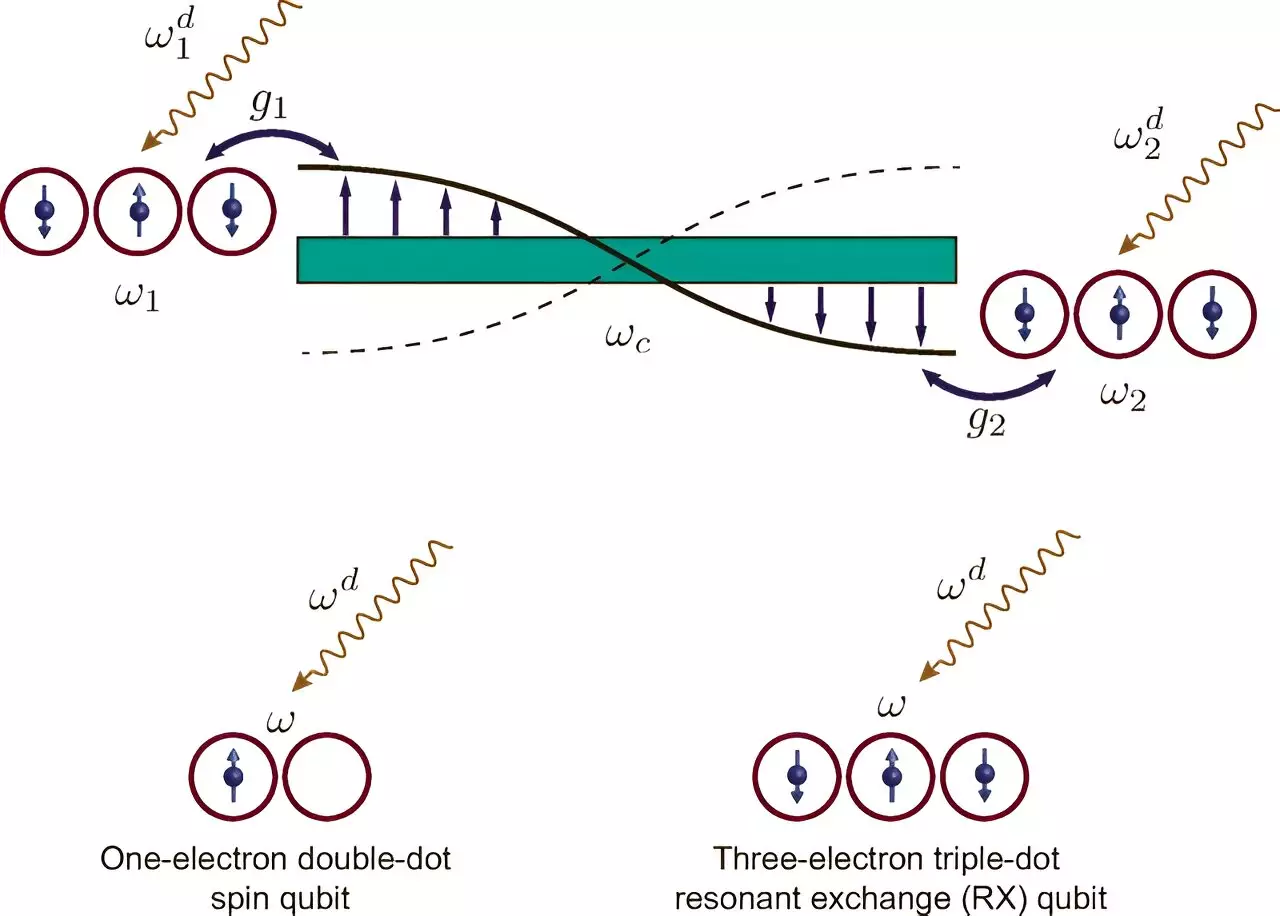Quantum computing stands at the frontier of modern technology, promising to revolutionize how we process information. Unlike classical computers that rely on binary bits, quantum computers utilize quantum bits, or qubits, which can exist in multiple states at once. This unique characteristic allows quantum computers to perform calculations that can be exponentially faster than those executed by classical supercomputers. Despite this potential, realizing a fully functional quantum computer capable of utilizing millions of qubits remains a significant challenge.
One of the prominent hurdles in the implementation of quantum computers is scaling operations to accommodate a vast number of qubits. Each qubit functions at a specific frequency, and to effectively manipulate them, it is crucial to individually control these frequencies. As the number of qubits increases, maintaining individual frequency control while linking pairs of qubits for coordinated operations becomes increasingly complex. The intricate electronic components required for this control can quickly become unwieldy, creating a bottleneck in quantum processor development.
Recent research led by Vanita Srinivasa and her team has proposed a novel approach to scaling quantum processors through a modular framework. This method allows the linking of qubits over extended distances while enabling them to function cooperatively. The ability to perform “entangling” operations—where linked qubits act in a coordinated manner—represents a significant leap in the quantum computing realm.
In their research, published in the journal PRX Quantum, Srinivasa and her collaborators present a systematic approach to generating additional frequencies for each qubit, facilitating the connection between multiple qubits without necessitating uniform resonance among their original frequencies. This method essentially provides a flexible means of linking qubits, setting the stage for more efficient quantum operations.
At the heart of this modular quantum computing paradigm lies the use of quantum dots, which are semiconductor structures designed to confine electrons and enable individual control. Coupled with superconducting cavities, which confine photons used for information transfer, the combination provides a promising foundation for managing and manipulating qubits effectively.
The theoretical groundwork laid out by Srinivasa’s research details how oscillating voltages can be applied to spin qubits within quantum dots, creating additional sideband frequencies. This innovation enhances the capacity for fine-tuning qubit interactions, broadening the criteria under which qubits can synchronize and perform entangled operations.
Moreover, the proposed methodology suggests that qubits need not be tuned to a single frequency for optimal operation. Instead, the introduction of multiple resonance conditions significantly simplifies the process of adding qubits to a system and allows for a richer variety of entangling operations.
The implications of a modular approach to quantum computing are profound. By treating qubit arrays as modular units akin to building blocks, researchers can develop systems that are both scalable and adaptable. This approach minimizes the challenges associated with increasing complexity by breaking down the construction of quantum processors into more manageable segments that can be interconnected.
Srinivasa draws an analogy with LEGO blocks, emphasizing how this methodology enables the assembly of larger systems while retaining flexibility and resilience. As quantum technologies continue to advance, developing reliable long-range entangling links will be pivotal in establishing robust connections between qubits, akin to the structural integrity necessary for a well-crafted model.
Srinivasa’s research represents a significant step forward in the quest for effective, scalable quantum computers. The proposed sideband frequency technique and its implications for linking qubits signify a promising direction for overcoming existing limitations in quantum information processing.
Understanding the unique needs of semiconductor-based quantum systems and developing methods that account for the inherent challenges provide a clear pathway toward modular quantum processors. As researchers refine their strategies and move toward practical implementations, the vision of harnessing the full potential of quantum computing becomes increasingly attainable.
The journey of quantum computing is just beginning, and while many obstacles remain, innovations such as those presented by Srinivasa and her colleagues illuminate the transformative possibilities that lie ahead. By embracing modular frameworks and flexible designs, the future of quantum computing promises to unlock unparalleled computational capabilities.


Leave a Reply